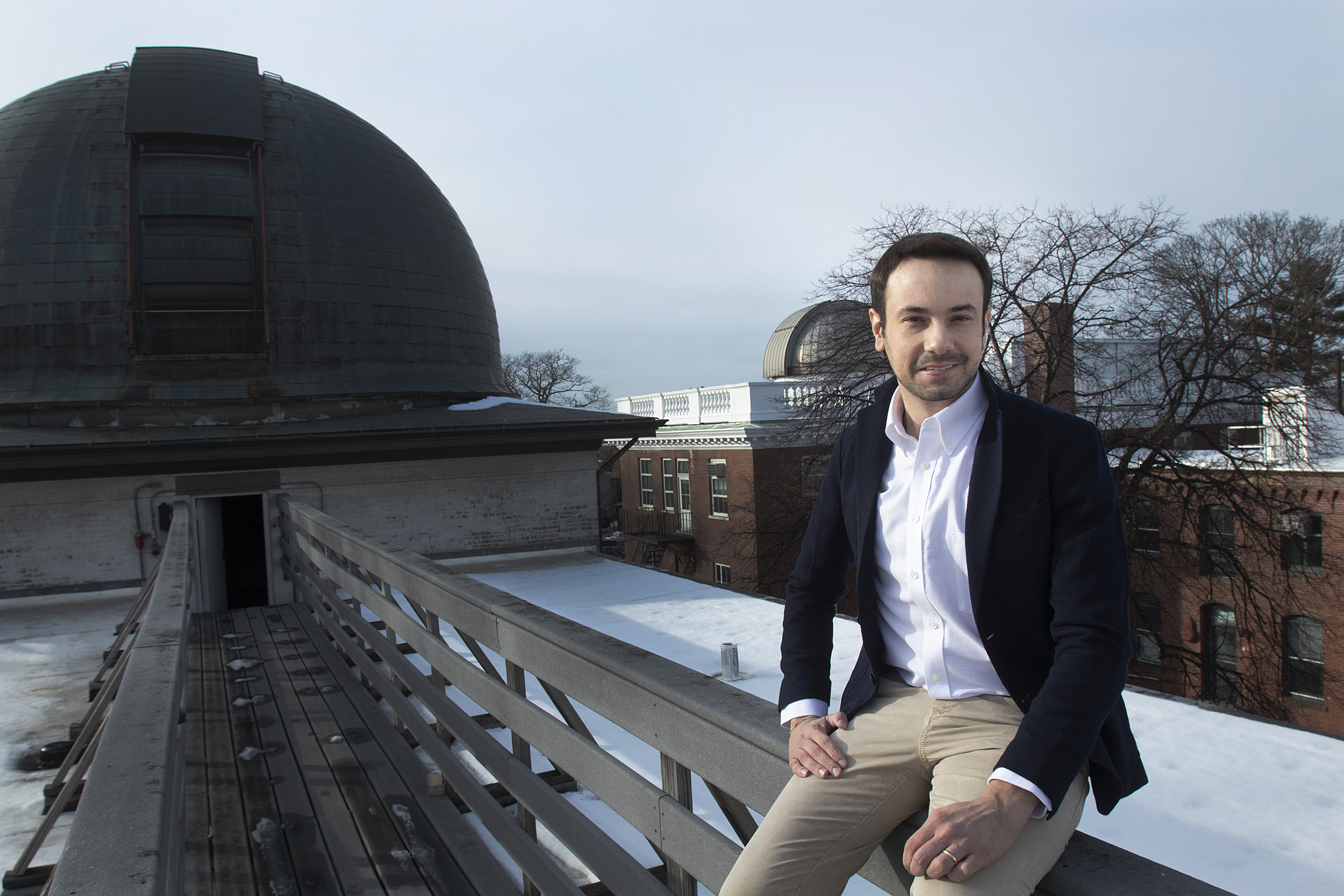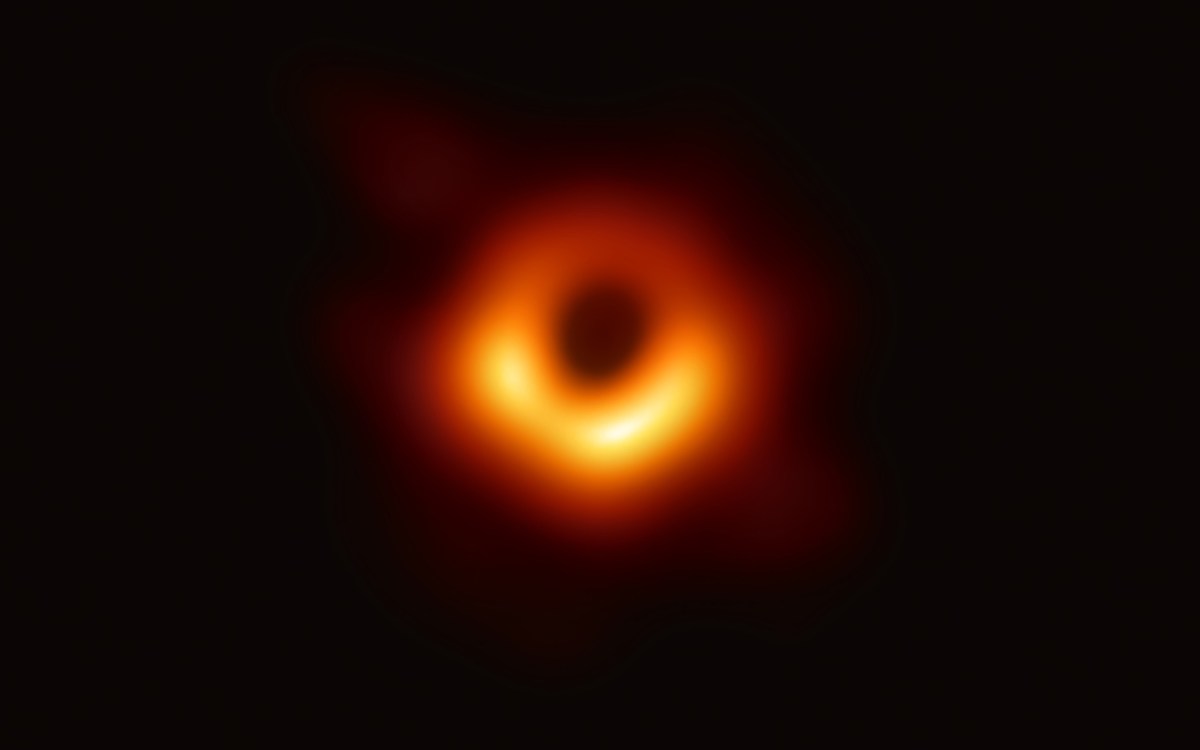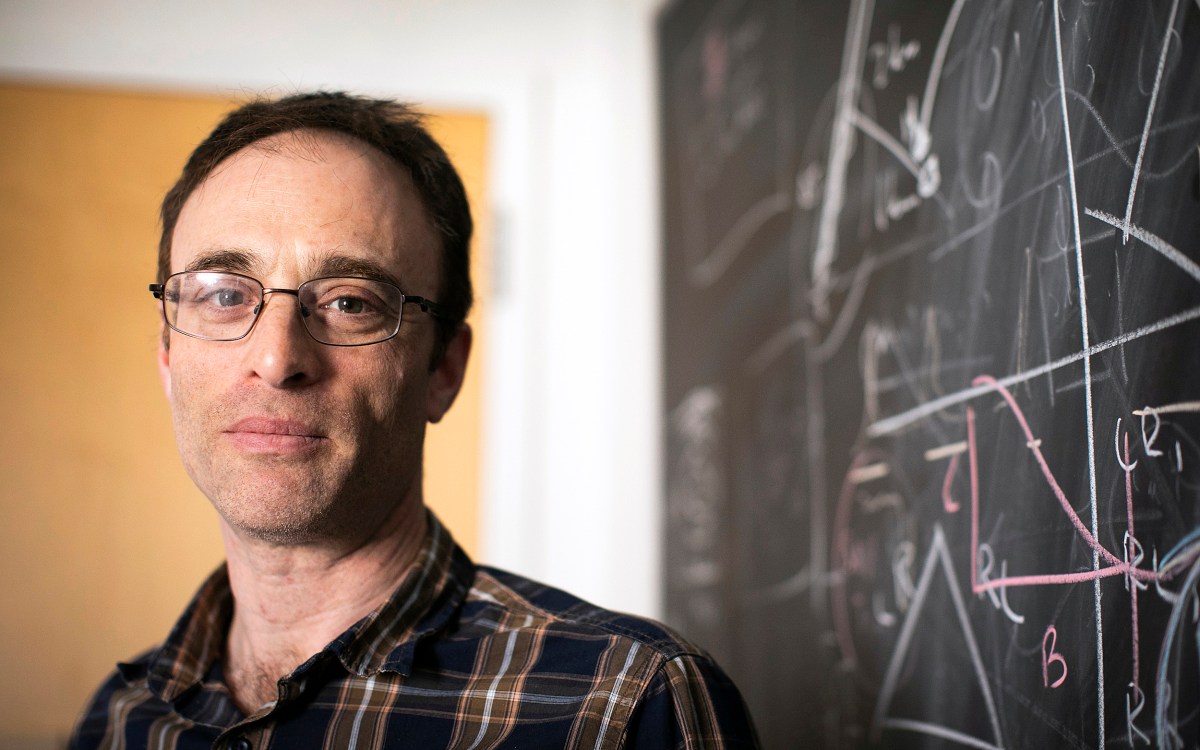
Fabio Pacucci created three explanatory videos with TEDEd that have been translated into 21 languages and reached hundreds of thousands of viewers.
Photo by Aaron Ye
Translating black holes to the public — in 25 languages
Astrophysicist postdoc works to make arcane science understandable
Can the Earth be swallowed by a black hole? And can black holes — with their immense destructive power — themselves be destroyed?
Millions apparently want to know, and a Harvard postdoctoral fellow and black-hole expert is providing the answers in educational videos that have been translated into more than two dozen languages and viewed more than 4 million times.
The fellow is Fabio Pacucci, a theoretical astrophysicist studying the universe’s very earliest black holes. Pacucci, whose appointment is held jointly with Harvard’s Black Hole Initiative and the Center for Astrophysics | Harvard & Smithsonian, is developing theories to explain observations of distant, ultra-bright quasars — powered by the supermassive black holes that occupy the center of galaxies — that arose a few hundred million years after the Big Bang, some 13 billion years ago.
“It seems they formed too quickly, too rapidly, to be explained by our current idea of the universe,” Pacucci said.
In addition to figuring out astronomical mysteries, however, Pacucci has a strong interest in science education.
“I believe it’s a very important part of the job of a scientist,” Pacucci said. “It’s part of being curious. If you want future scientists … you need people able to explain things that may be difficult.”
Pacucci began doing public outreach while studying for his Ph.D. at the Scuola Normale Superiore di Pisa three years ago and continued while conducting research at Yale University before coming to Harvard. He said having to break down difficult concepts to their basic elements in order to explain them helps his own understanding as well.
“By explaining, I understand better,” Pacucci said. “Sometimes simple ideas are not so simple, and they spark new solutions for old problems.”
Over the last two years, Pacucci has worked with TEDEd, the educational arm of the nonprofit idea platform TED, to develop and disseminate videos about black-hole science. Pacucci’s work with TEDEd began when a friend sent him a TEDEd video. He’d never heard of the group, and explored further, finding out that they work with educators to produce scripts on particular topics, then send the result to animators and voice-over artists who pull the video together. Pacucci sent them an email suggesting he produce something about black holes, leading with questions designed to engage the audience so they can learn.
“I gave a different perspective. Instead of talking about black holes in general, asking the question ‘Could Earth be swallowed by a black hole?’ is a way to make people curious about where they [the black holes] are, how big they are,” Pacucci said. “The risks for our planet are negligible, but they learn a lot.”
That first video, “Could the Earth be Swallowed by a Black Hole?,” was released in September 2018, took six months to produce, and runs just under five minutes. It’s been translated into 25 languages and drawn 1.4 million views. The most popular of the three produced so far — and three more are in the works — is “Can a Black Hole Be Destroyed?,” which has received 1.6 million views, collected 26,000 likes, and generated more than 1,000 comments. The third and most recent, “Hawking’s Black Hole Paradox Explained,” came out in October and deals with the late black-hole expert Stephen Hawking’s theory that black holes, which swallow everything in their path, slowly evaporate over time. This means that the quantum information (the spin, position, velocity that defines each particle in the universe) of anything that fell into them may be lost forever, something that was thought to be impossible.
“I think black holes have always fascinated the imagination,” said Alex Rosenthal, editorial director for TEDEd Animation. “Because of that fascination, they’re a good entry point for people to get interested in astrophysics.”
Rosenthal works with educators like Pacucci to develop a script, and then hands the project to an array of animators around the globe. Those artists, he said, are given pretty wide leeway to bring the script to life, which gives the TEDEd videos a varied feel — and educators like Pacucci the benefit of their expertise.
“Animators know nothing about astronomy, and I know nothing about animation,” Pacucci said.
TEDEd publishes about 150 videos a year, on a wide array of subjects, from math to science to history to language, Rosenthal said. For each video, TEDEd offers suggested course material to help teachers use it in the classroom.
“We’re trying to celebrate knowledge and learning and plant the seeds of curiosity,” Rosenthal said.
The videos are viewed widely. Pacucci said he’d recently heard from a student in Nepal whose teacher used a video in class. The lesson inspired the 14-year-old — who said he wants to be an astronomer — to email Pacucci, and they subsequently talked via Skype.
“I think it’s a nice way to see your work being used in a positive way around the world,” Pacucci said.








